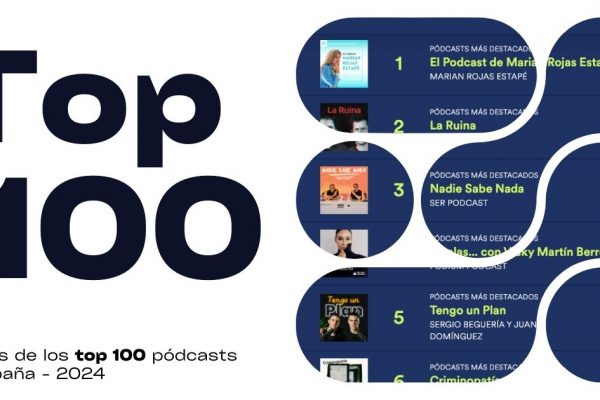If you're looking to increase your audience, you've come to the right place.
In this article, we'll present you with 10 effective ways to grow your content audience.
It's a compilation of tried-and-true ideas that will help you expand your audience, which is one of the major challenges content creators face.
Here are the 10 strategies we'll be covering:
- Inviting individuals with large audiences.
- Creating content on current and controversial topics.
- Utilizing SEO (Search Engine Optimization).
- Leveraging more viral channels for acquisition.
- Encouraging recommendations.
- Sponsorships (paid recommendations).
- Generating valuable or intriguing reports within your industry/vertical.
- Creating news-worthy content for the press.
- Appearing in lists or rankings.
- Growing based on your current audience.
Let's dive into each of them in detail:
Inviting individuals with large audiences
The first way to grow your content audience is by inviting people with significant followings..
If you have an interview-style podcast, conduct interviews in your newsletter, or create content for your blog, there are various ways to include guests in your content.
Even if your content doesn't typically involve interviews, you can have special episodes. For instance, Jaime Rodríguez from Kaizenoccasionally brings guests on special episodes, even though most episodes consist of him speaking alone.
So, there's always a way to bring in these guests. If you bring in people who are excellent in their field and, more importantly, have a large audience , when you release your podcast, newsletter, blog post, YouTube video, or any other content, these individuals are likely to share it with their audience, helping you gain new followers.
It's also important that if you do this, assist them in sharing. After you've published the content, remind them, send them the link, and even provide a pre-written tweet for them to share. Make it easy for these individuals to share your content with their audience.
Creating content on current and controversial topics
The second thing we can do to grow your content audience is essentially generating content on current topics that are a bit controversial.
Not all types of content have it as easy, but I believe there's always a way to fit it in. You can create a specific piece of content about a topic, arrange a roundtable discussion with several people discussing that subject, conduct interviews, or approach it in various ways that align with your content style.
By producing content on current events, what it allows you to do is ride the wave of interest that usually exists at a certain moment. For example, currently, topics like ChatGPT, everything related to generative AI, ChatGPT, and so forth, offer many opportunities to adapt them to your content.
It's a subject almost everyone is hearing about, interested in learning more, and more likely to engage with. It's generally more appealing content for people, and often, you can add a controversial edge to it. For instance, with ChatGPT, the other day news surfaced that the state of New York had prohibited the use of ChatGPT in classrooms.
These kinds of controversial news items tend to be a bit more clickbait, enticing people to click, consume your content, and serve as a way to introduce yourself to a new audience.
On another note, for example, Musk's recent activities on Twitter and related controversies have also generated a lot of interest. It's another type of content, another topic that might be interesting to cover because everyone observing these events wants to know a bit more about it—they've heard about it but aren't quite sure what's going on, so they'll consume your content to find out.
In any case, highly controversial topics within your industry at a given moment generate a lot of interest and audience engagement. They provide a way to reach audiences that might not otherwise engage with your more standard content and therefore might not subscribe to your podcast, newsletter, or other platforms.
A bit of clickbait can always help here, within reason. Creating attractive headlines or even remembering content formats like 'The X things that work best' or 'The three mistakes of Elon Musk' tends to perform really well, much like this content itself, which is '10 ways to grow your audience.' These sorts of content formats still work effectively.

Utilizing SEO to grow the audience
Another way to grow your content audience in 2023, which remains a classic , is by implementing SEO..
Make it easier for algorithms—whether it's Google with its search engine, or nowadays, TikTok, which has users using its search feature, YouTube with its search engine—to have your content appear whenever someone looks for relevant content.
And it doesn't matter if it's a newsletter because newsletters can be indexed. If it's a blog, it's probably more obvious, right? Because it's searchable obviously on Google. But if I'm doing a YouTube video, well, then work on the discoverability aspect on YouTube.
Even if I'm doing a podcast, where discovery is more complex, let's include all the relevant text so it can appear in Google search results, which also indexes podcasts, and so it can show up in searches on iVoice, for example, which also has a search engine, or on Apple Podcasts or whatever.
Anyway, there are people searching on different platforms, even on podcast platforms, YouTube, TikTok, or Instagram, and we want them to find our content. If it brings us 1, 2, 10, 15, 100 new users, then we're already getting more than before.
So, SEO continues to be, whether it's facilitating algorithms finding our content or users using these algorithms finding our content, something quite relevant to growing the audience.
Using more viral channels for acquisition
Another option to grow the audience is to use more viral channels for acquisition. utilizar canales más virales para la adquisición.
There are several content channels that help more or less in growing the audience. Often it's been said that podcasting, in general, is a channel that generates a lot of user engagement, gaining subscribers who listen to you a lot, and so on, but the discovery part is more complex. For example, it's not as viral a content channel.
However, there are other channels like TikTok, Twitter, or other platforms that are more viral. So it makes much more sense to have channels to attract users and other channels to retain them. Having this strategy helps us considerably.
Among all these things we can do, I usually recommend that if you have audiences on other channels, for example, if I have a newsletter, a podcast, but I I also have an audience on Instagram or Facebook, every time I publish new content, remember your audience, create mini-content ideal for Instagram, Facebook, or Twitter, or wherever your audience is, to remind them that you've released new content.
What you're looking for is to transfer audiences from places where you have a large audience to the place where you generate content and are building a slightly more engaged audience.
Let's not forget that. It's obvious, but some people don't do it: especially having social media platforms that are more viral at any given time, and this changes slightly based on trends and so on. But for example, during these recent times, TikTok has been extremely viral, although it's gradually losing that, but it still manages to gain virality.
For instance, in our case, the Growth podcast from Product Hackers released a clip not long ago that reached 600,000 views with a lot of comments, likes, and it brought us a new audience.
What you're looking for is, how the heck do I get hits on these social media platforms that will get me a reach that I wouldn't otherwise get without paying? If I have to invest a lot of money in advertising. So, think about social media platforms like Twitter, TikTok, or whichever is trending at the moment that I can use as a channel to make my content a bit more viral and help me build that audience.
And sometimes, hey, I can use existing communities or create my own to bring the audience a bit closer within this strategy of finding those channels that allow me to reach a slightly stronger audience.
Getting recommended
We move on to the fifth way to grow your content audience in 2023, which basically involves getting recommended by others and recommending others as well. It's about creating organic recommendations among content creators.
Esto, por ejemplo, Substack lo ha integrado hace poco como una forma bastante orgánica y funciona muy bien, que es que tú dentro de tu newsletter puedes recomendar otras newsletters y otras newsletters te recomiendan a ti.
Entonces, cuando alguien se te suscribe a tu newsletter, una vez suscrito, lo siguiente es que se le recomienda al sistema otra serie de newsletters. A mí en sobrecrecer.com, my growth newsletter has generated quite a few subscriptions, and I'm also directing a good number of subscriptions to friends who are creators. It's a way for us creators to help each other organically, without costs, and support each other in growing our audiences.
If you're not using Substack or are on other channels like podcasts, you can still do this by reaching out to friends or creators in your circle and making an exchange. Hey, why don't you talk about me on your podcast this week, and I'll do the same for you on mine?
Let's seek this organic way of recommending each other without having to make investments or anything, but it will help us grow because we leverage existing audiences from one another, exchanging and crossing over. Back in the day, link exchanges on blogs were pretty common—this is similar but in terms of content."

Sponsorships (paid recommendations)
Point number 6. This would be similar to being recommended and recommendingothers, but paying for it. So , engaging in sponsorships, paying people who have a newsletter, a podcast, or content that appeals to my audience to talk about us and bring in new subscribers.
This is starting to work really well, particularly in the realm of newsletters. I saw Víctor Rodado, who runs Hackeo, a newsletter and podcast, sponsoring another newsletter—Iconpeels, if I'm not mistaken—which targets a very similar audience in e-commerce and it makes a lot of sense.
In other words, if I'm interested in Jaime Mesa's audience at Iconpeels, what I do is pay him to promote me, reaching part of that audience. At ProductHackers, we've also sponsored Hackeo because we knew Víctor Rodado would generate an interesting audience related to our themes, and we wanted to capture part of that audience.
So, if you can't strike an organic deal with them, or if for some reason you prefer to invest rather than make an exchange, you have this sponsorship option..
For instance, at ProductHackers, in our newsletter, we prefer not to recommend other things because we have a lot of content and initiatives of our own to showcase, and managing the message becomes challenging. Moreover, we have the resources to invest and prefer sponsorship; that's an option.
Generating valuable or intriguing reports in your industry/vertical
Another way to grow the audience is basically to generate valuable or intriguing reports in your industry or vertical.
For instance, at Mumbler, we made a monetization report on content conducts an annual study on author newsletters and other studies related to newsletters. Chus Naharro conducts an annual study on author newsletters and other studies related to newsletters.
Ultimately, what you're trying to do is create a distinct and unique piece of content because you've analyzed your industry, examined what the top 100 newsletter creators or top 100 podcasters are doing, or if you have a newsletter or podcast about techno music, for instance, a report on the numbers of the most relevant techno DJs this year.
You analyze something and create a sector report, trying to extract data from different sources, conducting a survey or anything else, generating a piece of information that is highly valuable.
It's valuable for you, and therefore, you can exchange it for users' emails to later work on newsletter content.
It's so valuable that other niche media outlets will want to talk about it because you provide data that they wouldn't have otherwise, giving them other informational excuses. Ultimately, it's about how to create content that many people would like to discuss.
Maybe my opinion isn't relevant enough for others to talk about. Perhaps an interview I conducted with an interesting person isn't significant enough for others to discuss.
But if I generate a report with many data sources, drawing conclusions not found anywhere else, that usually gives a lot to talk about.
Generating news for the press
And that brings us to the eighth way to grow the audience, which is generating news for the press..
This is very underutilized in content creation, but if I have an interesting story to tell, for example, because I've done a report or because I happen to be the first content creator in my vertical making a living from my content, or any other story that might be interesting to the press—well, then I've got something to share.
It's about finding an informational excuse, creating news, and trying to position it in media. Often, if you have the means, you can work with agencies; otherwise, it's direct contact with journalists who cover topics related to your vertical, establishing relationships with them, sharing a bit of this story, and seeing if any of it resonates. Media outlets provide extensive reach.
If, suddenly, a magazine from your sector features you, it'll give you visibility among potential consumers of very strong content. Moreover, you can do this without paying. You can do it yourself without paying an agency or a medium to feature you, simply by creating interesting content.
I find this very interesting, especially when aligned with generating a report on certain trends—something relevant at the organic level and also used as an informational excuse to reach these people."
Appearing in listings
The ninth way to grow your content's audience is to appear in listings..
When I say listings, there are 200,000 listings for the top 10 business podcasts, the 15 best lifestyle newsletters, the best books on who knows what. There are also many listings on social media and Twitter threads, and such.
It's more challenging on Twitter threads, but for instance, identifying all those blogs that feature a list of the top 10 digital business podcasts, contacting them, and trying to get yours on the list, it's feasible. It requires groundwork, but you can work on it over time.
However, if you manage to get listed in 2, 3, 4 listings where you weren't before, that, over time, because these listings remain active for a long time, will enable users searching for podcasts on a specific topic to discover you.
On Twitter, for example, if you find a thread that does this, it's more complicated because it's harder to get added to a thread that was posted a while ago. But two things happen. First, sometimes these creators have these threads in autolists, like they publish them occasionally. So, you can contact them and say, "Hey, if you publish this thread again or something similar, here's my content, see if you find it interesting or if other strategies come to mind."
You could even promote it, like saying, "If you repost it, let me know, and I'll pay you a small amount to include my content." Either way, people use these kinds of listings to discover content to follow, and it's a place where you want to be.
Growing based on your current audience
And the last option, the tenth option for growing your audience, is growing based on your current audience..
This sounds better than it usually is because activating your audience or achieving significant results is often challenging, especially if you have a small audience. But it's worth starting and gradually working on it from the beginning so that as your audience grows, it generates a series of dynamics that allow and facilitate further growth. For example, if I grow by, say, 100 people using the rest of the options, with this method, I'll grow by an extra 5. So, for every 100 I grow, I'll grow by 105.
This somewhat activates your audience, generating additional interest in what I'm achieving. So how do you achieve this? As easy as politely asking them to share. "Hey, you can integrate a referral system in your newsletter, so each user has a sharing link where you can track how many users each one brings and then reward them, even pay them."
But sometimes, a badge, a recognition, or anything can work. You can offer gifts. In fact, it can help you connect with brands in your industry to provide a product. For example, to review a product and then offer it as a gift to the people who have brought in the most users or audience for you. There are a thousand things you can think of, but gradually activating it.
One way is to remind them in all spoken, recorded, or written content that they can share it. Because if you don't remind them, people won't do it.
Consider occasionally setting up a referral system or even running contests or giveaways for those who share your content the most. It's something worth trying occasionally. And if it works for you, it's a tactic you can try every now and then, one you can scale.
Conclusion
Well, that's it for now. These are the 10 ways to grow your audience as a content creator in 2023.
I'm sure I've missed many other strategies, so anything that comes to mind, feel free to leave a comment on this content or reach out to me via Twitter. You can also contact us at Mumbler on Twitter or however you prefer.
We'd love to consider other methods you might be following to grow your audience the next time we compile a list like this. Remember that you're more than welcome to share this content with your friends.
We want to engage our audience as well, so if you're interested, we have a community of content creators at community.mumbler.io where you can interact with us and many other content creators who are building businesses around their content.
Best regards!








